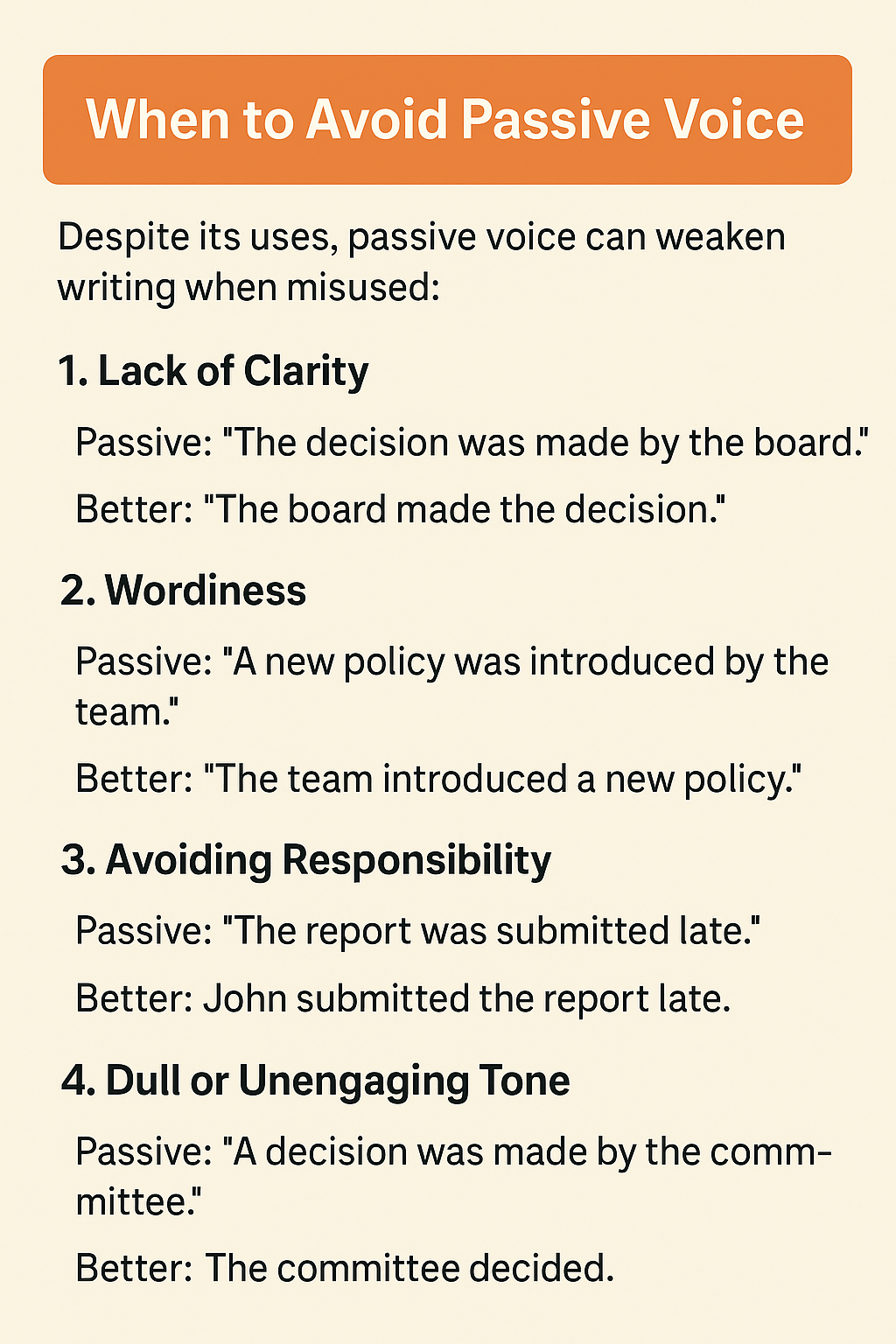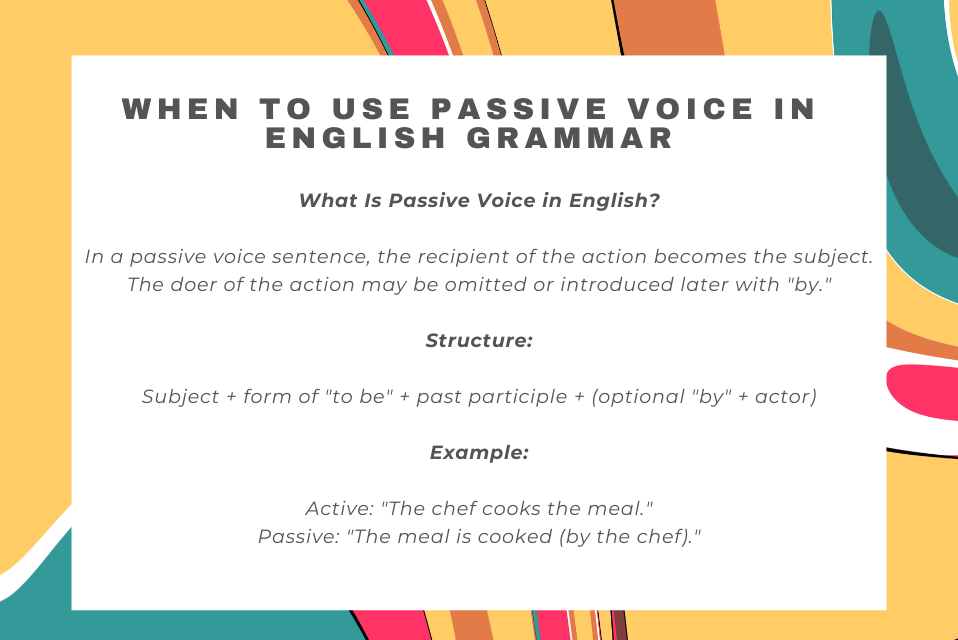The passive voice in English is a grammatical structure where the subject receives the action rather than performing it. While the active voice is generally more direct and preferred in everyday writing, recognizing how verb choice impacts style is key. Many learners make this a common error so for real‑world usage tips and error avoidance, check out our article on top 20 grammatical errors English learners make.
This article explores what the passive voice is, when it’s helpful, when it should be avoided, and how to convert between active and passive constructions.
What Is Passive Voice in English?
In a passive voice sentence, the recipient of the action becomes the subject. The doer of the action may be omitted or introduced later with “by.”
Structure:
Subject + form of “to be” + past participle + (optional “by” + actor)
Example:
- Active: “The chef cooks the meal.”
- Passive: “The meal is cooked (by the chef).”
Why Use Passive Voice?
The passive voice can be useful in the following scenarios:
- When the Actor is Unknown
- Passive: “My wallet was stolen.”
2. When the Actor is Irrelevant
- Passive: “The cure for cancer was discovered.”
3. To Emphasize the Object or Result
- Passive: “A new treatment was developed by the researchers.”
4. In Scientific or Formal Writing
- Passive: “The hypothesis was tested in the lab.”
5. To Avoid Assigning Responsibility
- Passive: “The store was closed.”
How to Convert Active to Passive
Step-by-step Guide:
- Identify the subject, verb, and object.
- Move the object to the subject position.
- Use the correct form of “to be” + past participle.
- Optionally add the actor with “by.”
Example:
- Active: “The committee approved the proposal.”
Passive: “The proposal was approved (by the committee).”
When to Avoid Passive Voice

Despite its uses, passive voice can weaken writing when misused:
- Lack of Clarity
- Passive: “The decision was made by the board.”
- Better: “The board made the decision.”
2. Wordiness
- Passive: “A new policy was introduced by the team.”
- Better: “The team introduced a new policy.”
3. Avoiding Responsibility
- Passive: “The report was submitted late.”
- Better: “John submitted the report late.”
4. Dull or Unengaging Tone
- Passive: “A decision was made by the committee.”
- Better: “The committee decided.”
Common Pitfalls
- Overuse: Creates distant, monotonous tone.
- Unnecessary Use: When the actor is obvious.
- Passive: “The email was sent by me.”
- Better: “I sent the email.”
3. Mistaking Descriptions for Passive
- Not Passive: “The cake is delicious.”
- Passive: “The cake was baked by the chef.”
Tips for Better Writing
- Be Purposeful: Use passive voice only when it improves clarity or flow.
- Vary Sentence Types: Combine both voices to keep writing dynamic.
- Use Active Voice for Engagement: It tends to be clearer, shorter, and more powerful.
Conclusion
Understanding passive voice in English can improve your grammar and writing style. Use it to emphasize results, maintain formality, or conceal the actor when necessary. However, in most cases especially when clarity and engagement are key the active vs passive voice comparison highlights why active voice is the better choice.
Learn both voices gives you the flexibility to adjust your tone, focus, and intent depending on your audience and goals.
FAQS: Passive Voice in English Grammar
Q1: Is passive voice grammatically incorrect?
No, passive voice is grammatically correct. However, it’s often less preferred in casual or persuasive writing because it can be less direct or engaging.
Q2: Can I use passive voice in academic writing?
Yes. Passive voice is commonly used in academic and scientific writing, especially when the focus is on the process or result rather than the actor.
Q3: How can I tell if a sentence is passive?
Look for a form of the verb “to be” followed by a past participle (e.g., “was written,” “is eaten”). If the actor is introduced with “by,” it’s almost certainly passive.







